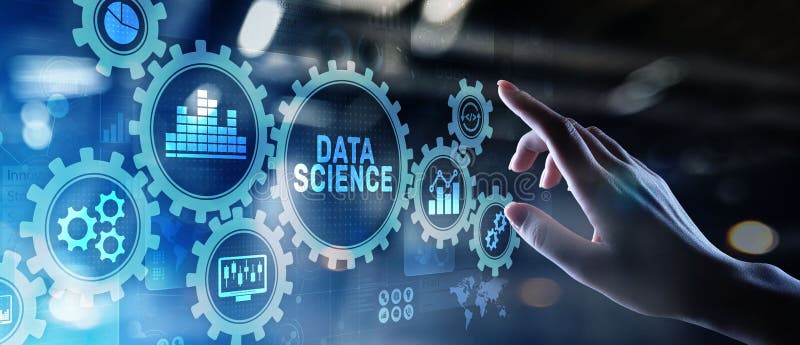Currently Empty: $0.00
Blog
Your Self-Guided Roadmap to Learning Data Science

Learning Data Science on your own is highly achievable but requires a structured approach, consistency, and a focus on practical application. Here is a five-phase roadmap detailing how you can effectively build your skills, knowledge, and portfolio.
Phase 1: Establish Your Foundation (The Basics)
Start with the core disciplines that underpin all Data Science work. Aim for foundational fluency in these areas before moving on.
1. Master the Core Tools (Coding & SQL)
- Python or R: Pick one language and become proficient. Python is generally recommended for its versatility (data science, web apps, deployment).
- Python Libraries: Focus heavily on Pandas (data manipulation), NumPy (numerical operations), and basic Matplotlib/Seaborn (visualization).
- SQL (Structured Query Language): Learn how to retrieve, filter, join, and aggregate data. Data scientists spend a significant amount of time querying databases.
2. Understand the Math and Statistics
- Statistics: Focus on descriptive statistics (mean, median, mode, variance), probability distributions, hypothesis testing, and regression. You don’t need a math degree, but you need to understand why you are using a statistical method.
- Linear Algebra & Calculus: Understand the basic concepts that power machine learning algorithms (e.g., gradients in calculus for optimization, matrix multiplication in linear algebra).
Phase 2: Core Data Science Skills (The Engine)
Once you have the foundation, apply those tools to the actual Data Science workflow.
1. Data Cleaning and Preprocessing
This is often 70-80% of a data scientist’s job.
- Learn to handle missing values, outliers, inconsistent data formats, and feature scaling/engineering.
- Tools to master: Pandas and Scikit-learn’s preprocessing modules.
2. Visualization and Exploratory Data Analysis (EDA)
- Use libraries like Matplotlib, Seaborn, or Plotly to visually analyze data.
- Practice EDA to identify patterns, anomalies, test hypotheses, and inform your feature engineering decisions.
3. Machine Learning Fundamentals
- Understand the difference between Supervised (Regression, Classification) and Unsupervised (Clustering, Dimensionality Reduction) learning.
- Implement core algorithms using Scikit-learn:
- Regression: Linear and Logistic.
- Classification: K-Nearest Neighbors (KNN), Decision Trees, Random Forests.
- Model Evaluation: Learn to use metrics like accuracy, precision, recall, F1-score, and AUC/ROC.
Phase 3: Build Your Portfolio (Show, Don’t Tell)
A portfolio of practical projects is the most critical element for landing a job.
1. Find Real-World Data
- Use public datasets from Kaggle, UCI Machine Learning Repository, or government sites. Kaggle is excellent because it includes competitions and notebooks from top practitioners.
2. Complete Three Project Types
Ensure your portfolio covers the main types of Data Science problems:
- Classification Project: Predict a categorical outcome (e.g., predict if a loan applicant will default).
- Regression Project: Predict a continuous value (e.g., predict house prices or sales figures).
- Clustering/Unsupervised Project: Segment a dataset (e.g., customer segmentation).
3. Document and Share
- Write a complete, professional report for each project. Explain the business problem, the EDA findings, the model selection process, and the conclusions.
- Host your code on GitHub and your reports on a platform like Medium or within Jupyter Notebooks.
Phase 4: Specialization and Advanced Topics (The Edge)
After mastering the basics, explore fields that align with your interests.
- Deep Learning (DL): If you are interested in images, audio, or advanced text, learn TensorFlow or PyTorch. Focus on Convolutional Neural Networks (CNNs) and Recurrent Neural Networks (RNNs).
- Natural Language Processing (NLP): Learn to work with text data, including text classification, sentiment analysis, and the Transformer architecture (BERT, GPT).
- Data Engineering: Understand the data pipeline process, including tools like Spark or basic cloud technologies (AWS, Azure, GCP).
Phase 5: Continuous Improvement (The Commitment)
Data Science is a field of constant learning.
- Read Research Papers: Follow major conferences (NeurIPS, ICML) or research blogs for the latest breakthroughs.
- Network: Join online communities (Reddit’s r/datascience, Stack Overflow) and attend local tech meetups (in-person or virtual).
Stay Practical: Always tie new knowledge back to a practical problem or dataset. Theory without application is just trivia.

